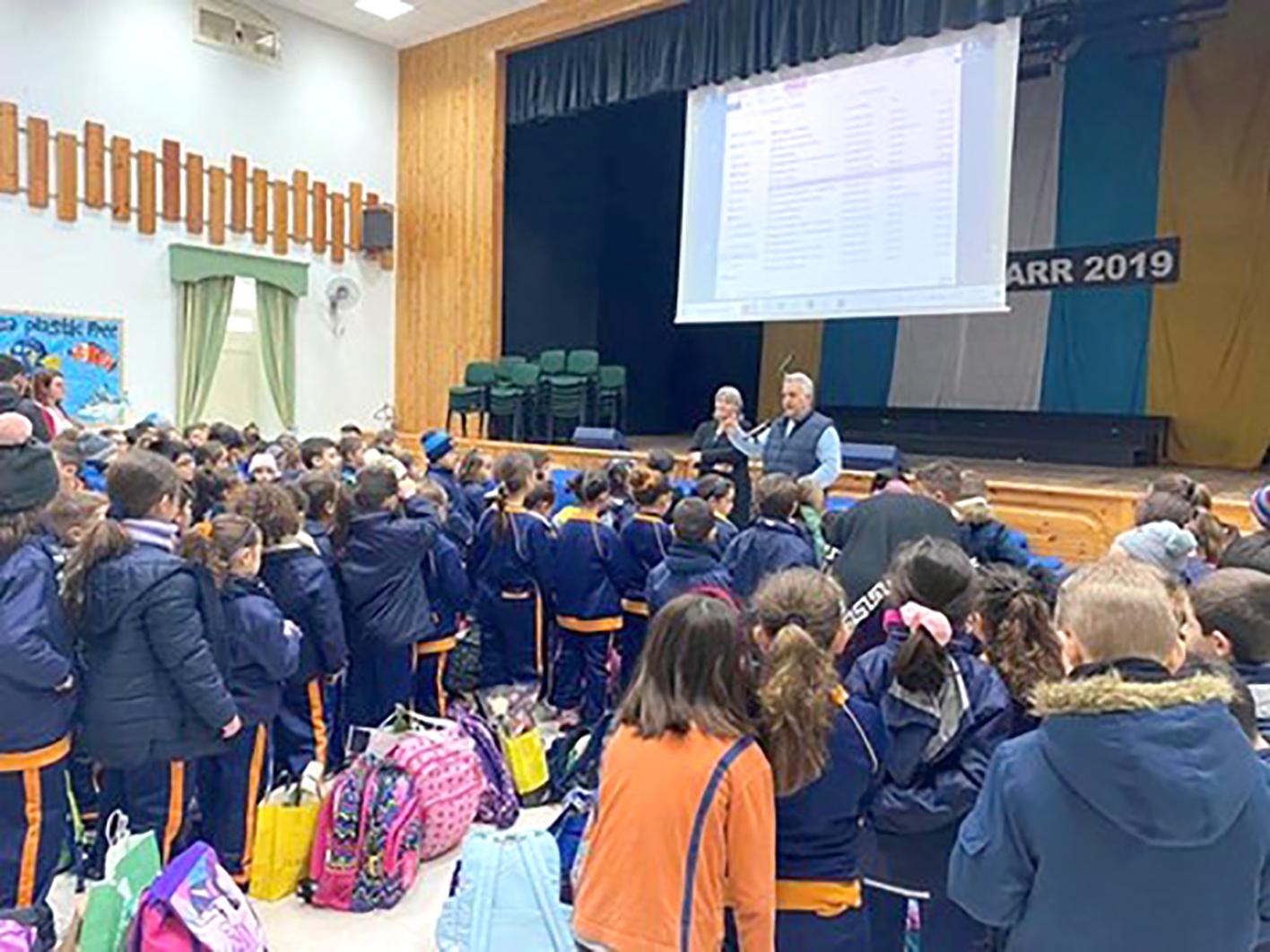100 years of Mġarr primary school
School was inaugurated on September 19, 1923 thanks to efforts of village’s benefactor Fr Edgar Salomone

When Fr Edgar Salomone, the great benefactor of Mġarr, arrived in December 1920 as vice-parish priest, he was appalled by the lack of education that prevailed among the parishioners. Only one per cent were literate in English and/or Italian and only four per cent in Maltese (Malta Government Census 1921).
Highly spirited as he was, he set out to redress this trajectory. He immediately began to teach in a barber’s shop around 40 men who wished to seek better fortunes abroad. In the dim light of a paraffin lamp, he taught them some basic English and Maltese, enabling them to communicate with their eventual foreign counterparts and to write some news to their families they left behind.
He then made all efforts to influence the newly-elected members of the Self-Government of 1921 in favour of a government primary school for Mġarr. His hard work came to fruition and, in less than three years since his arrival, a school, consisting of eight large and airy classrooms with three other service rooms, was inaugurated on September 19, 1923 by Lord Plumer (Annahilium Scriptor, Mġarr − Malta A Retrospect from Records, 1946). Then education minister, Enrico Dandria, the director of education, Captain A.V. Laferla and other dignitaries were also present.
The new beginning was, understandably, difficult for both teachers and taught. With very little resources and seriously lacking any pedagogical training, the teachers found it extremely hard to domesticate the children of Mġarr and to instil in them the love for learning (Cilia, Ġ. A., Diskors f’Għeluq il-50 Sena mill-Iskola tal-Imġarr, 1973).
Gradually, however, the inculturation process gathered momentum and, by 1946, when primary education became compulsory for all children aged six years, there were no more than six children who were not attending school (Cilia Ġ, Diamond Jubilee Speech, 1986, para 2).
This was confirmed by Brennan, the then director of education, who said that: “Mġarr, in spite of having many scattered hamlets miles away from the school and without any means of transport available, had the highest percentage of children attending school” (ibid). The school population continued to grow, reaching a peak of 487 pupils in 1959 (Cilia, Ġ. A., Annual Speech, 1960).
 The naming of Mġarr primary school after Ġanni A. Cilia in March 1998. Cilia himself unveiled the plaque.
The naming of Mġarr primary school after Ġanni A. Cilia in March 1998. Cilia himself unveiled the plaque.The main emphasis of teaching was essentially utilitarian, skilling children in various aspects and to prepare them for life: basic literacy and numeracy skills, the transmission of knowledge, ‘drawing’ lessons, singing, physical education then popularly referred to as ‘drill’, a taste of it-tejatrin (drama) and the inculcation of Christian beliefs and values.
For the girls, the acquisition of skills included those connected with needlework, handcrafts and house-craft chores.
As from 1923, the school was opened after school hours for the Skola ta’ Billejl (night school), giving the opportunity for the elder people to also acquire basic literacy skills.
In 1946, dressmaking evening lessons commenced and these were very well attended. It can, therefore, be said that, in those first decades, the school played a vital role for the emerging community of Mġarr as the only seat of learning.
The challenges, however, were also there, primarily for the school to raise its expectations and children’s aspirations, inducing them to continue with their studies. The fact that the predominantly farming community was rife with emigration prospects, had large and poor families, and inaccessibility and lack of transport rendered this task very difficult for the school to accomplish. Only the very few succeeded to transcend the socioeconomic barriers of rural Mġarr.
Nonetheless, the children of Mġarr grew up into hard-working and responsible adults who very diligently raised their families into exemplary citizens, guided by Christian values. The many Mġarrin who had to go abroad in faraway lands, equally led their lives with zeal and industry. They made a name for themselves and their country.
Old pupils still very proudly remember the learning experiences and the warm relationships they had with their teachers, the respect they had, the jokes they shared, the silly things they did, the anecdotes. Such is the impact that teachers can have on their pupils.
 The mayor of Mġarr, Paul Vella, addressing the pupils of Mġarr primary in preparation for Mġarr Day.
The mayor of Mġarr, Paul Vella, addressing the pupils of Mġarr primary in preparation for Mġarr Day.In the past 50 years, the school has evolved in a much-changed Mġarr. Improved communication channels, very low emigration prospects, better educational and employment opportunities, higher aspirations of the Mġarrin and, in the last two decades, the influx of new settlers in the village have all affected the school and added a new dimension to its mission.
One of the 20 headteachers who ran Mġarr primary in these 100 years was Ġanni A. Cilia. In 1926, he came to Mġarr and led the school for 37 years. Generation after generation, the children of Mġarr received their education under his hands. The school was rightly named after this headmaster in March 1998.
The Mġarr local council will be celebrating the 100 anniversary of the Mġarr primary school in due course as appropriate.
Lina Deguara is a former pupil and a former assistant head of the Mġarr primary school.